Creative Writing Tutankhamum Activity
£3.00
The main focus in this lesson is writing a paragraph for a story about a thief who is trying to steal the mask of Tutankhamun from an Egyptian museum. This writing is fully scaffolded with writing support that includes first person, past tense, synonyms, verbs and adverbs. This lesson also includes support to encourage pupils to make their writing the best that it can be.
There is a five-minute evidence-based CPD activity at the end of this lesson which will develop classroom teachers’ skill set. This CPD consists of a research extract on self-assessment with a five-minute activity based on this extract.
Description
These evidence-based learning (EBL) lessons are based on classroom practice that has been proven, by research, to maximise thinking, learning and attainment. From an extensive review of educational research, we identified the eight key classroom thinking and learning skills that were common across these research papers. We named these eight key skills “EBL skills”.
EBL skills have been proven by research to maximise learning because they combine the most productive thinking skills with the most effective learning behaviours. Each of our evidence-based learning lessons uses the English curriculum as a framework through which the eight EBL skills are delivered.
Teachers also have the opportunity to add to their own skill set or refresh their existing skills with our five-minute CPD activity, based on one of the EBL skills used in this lesson.
The skills in bold below are the EBL skills developed in this Familiar Settings lesson. Click on each skill to learn more about that skill.
- Collaboration
- Thinking Skills
- Peer Assessment
- Peer Teaching
- Self-Assessment
- Metacognition
- Self-Regulation
- Independent Learning
1 review for Creative Writing Tutankhamum Activity
Only logged in customers who have purchased this product may leave a review.
Related products
-
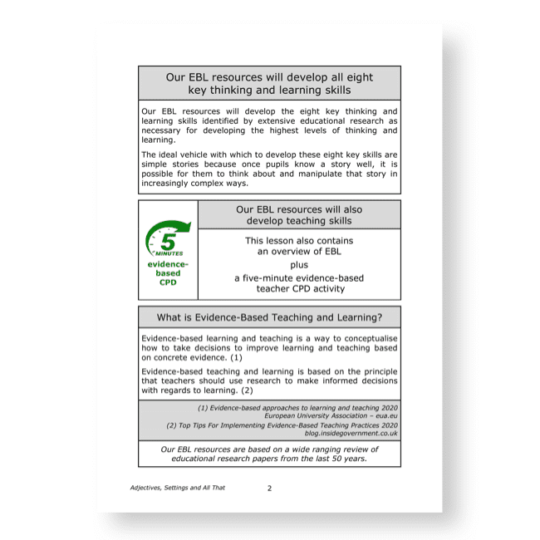

Adjectives, Settings and All That
£3.00 Add to basket £3.00Add to basket
£3.00Add to basketThis lesson looks use of adjectives, nouns and verbs in story settings. Activities in this lesson include answering higher and lower order questions, writing a paragraph for a story and writing instructions to make a snowman.
There is a five-minute evidence-based CPD activity at the end of this lesson which will develop classroom teachers’ skill set. This CPD consists of a research extract on thinking skills with a five-minute activity based on this extract.
VIEW -

 SAVE 25%
SAVE 25%Familiar Settings Lower + PDF
£24.75 Add to basket £24.75Add to basket
£24.75Add to basketSave 25% when you buy all 11 lessons in this series:
- Everyday Settings
- On the Beach
- The Beach, the Campsite and the Garden
- The Dog Quickly Typed a Long Letter
- A Pirate on the Moon
- It was Pitch Black and Freezing Cold
- Adjectives, settings and All That
- The Storm
- Rain Spoils the Day!
- Deva Built a Sandcastle
- Creative Writing Activity
VIEW -
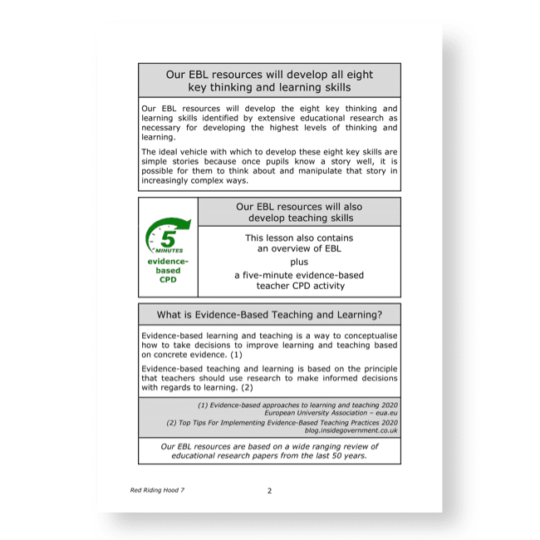

The Wolf Gets Lost in the Woods
£3.00 Add to basket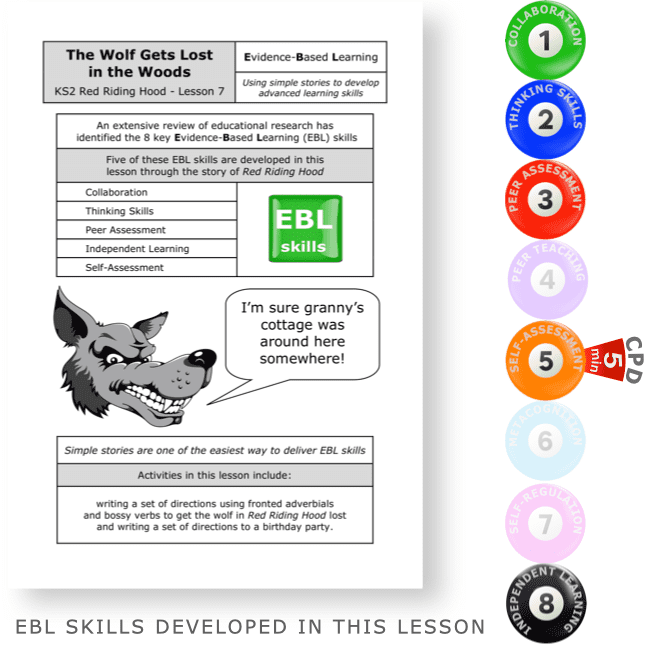 £3.00Add to basket
£3.00Add to basketActivities in this lesson include writing a set of directions using fronted adverbials and bossy verbs to get the wolf in Red Riding Hood lost and writing a set of directions to a birthday party.
There is a five-minute evidence-based CPD activity at the end of this lesson which will develop classroom teachers’ skill set. This CPD consists of a research extract on self-assessment with a five-minute activity based on this extract.
VIEW -
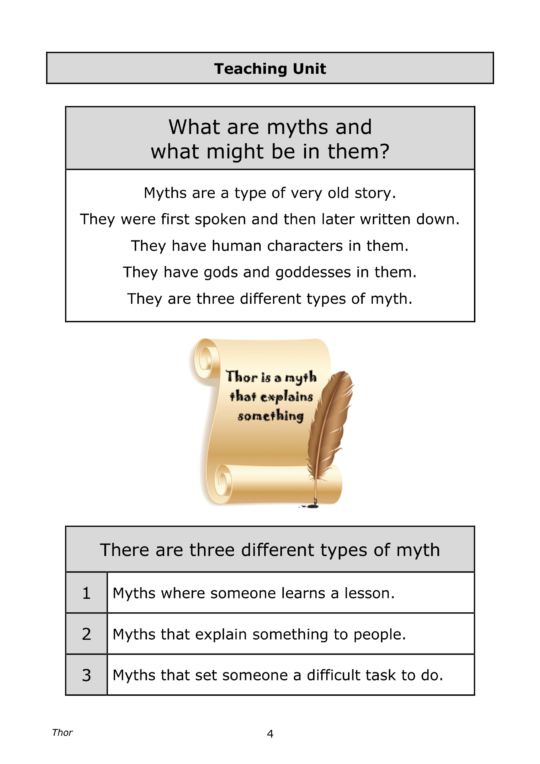
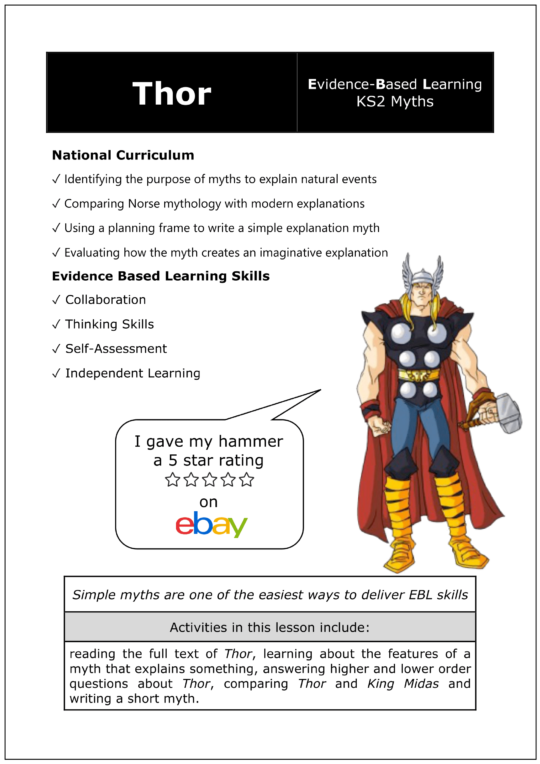
Y5 Thor
£3.00 Add to basket £3.00Add to basket
£3.00Add to basketKS2 National Curriculum:
✓ Identifying the purpose of myths to explain natural events
✓ Comparing Norse mythology with modern explanations
✓ Using a planning frame to write a simple explanation myth
✓ Evaluating how the myth creates an imaginative explanationActivities in this lesson include reading the full text of Thor, learning about the features of a myth that explains something, answering higher and lower order questions about Thor, comparing Thor and King Midas and writing a short myth.
There is a five-minute evidence-based CPD activity at the end of this lesson which will develop classroom teachers’ skill set. This CPD consists of a research extract on self-assessment with a five-minute activity based on this extract.
VIEW

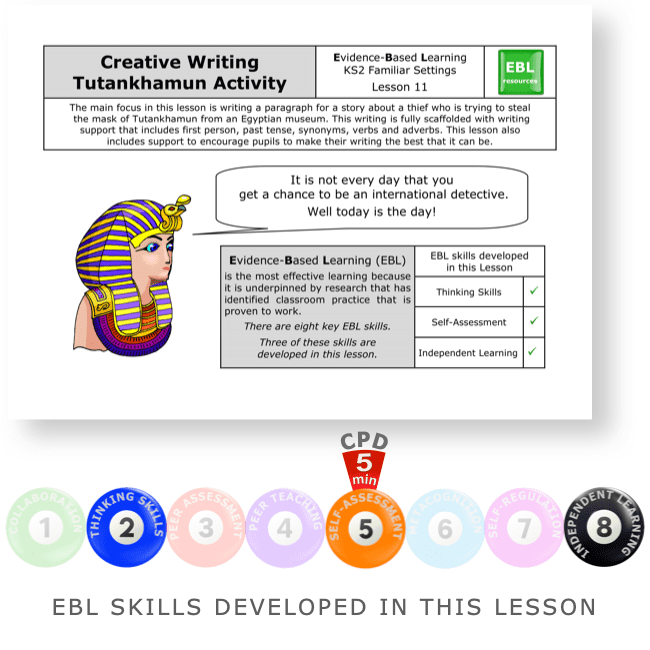
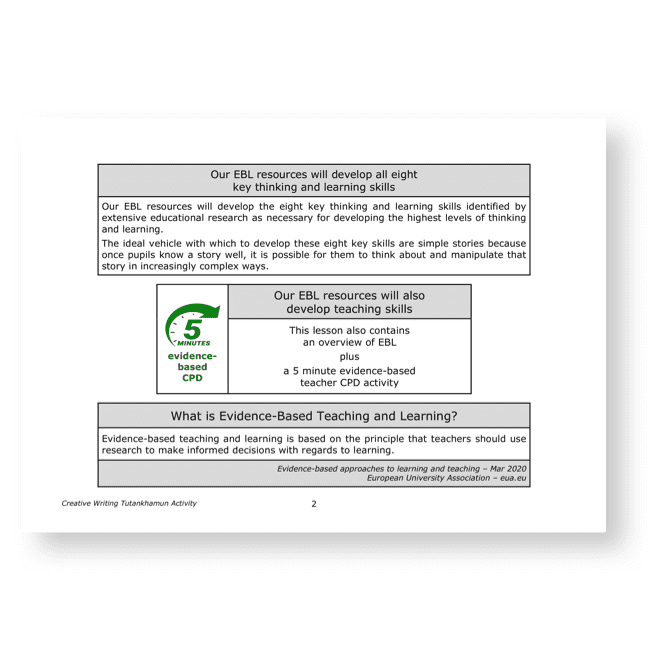

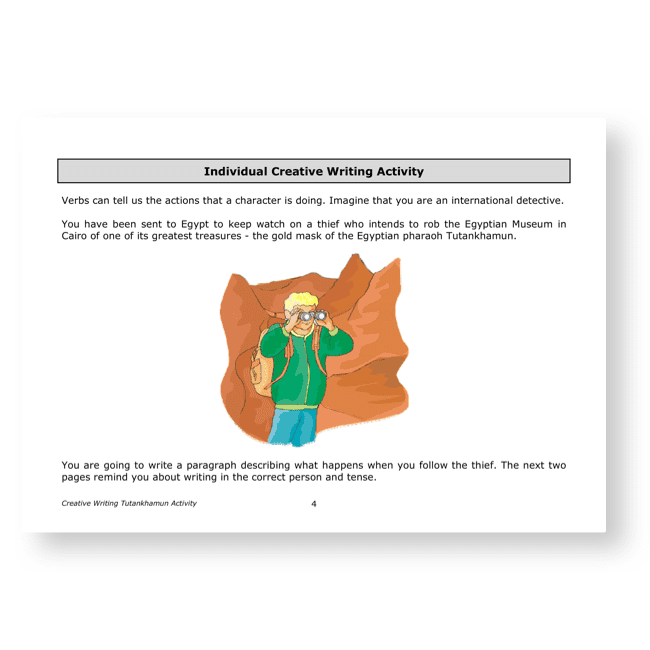

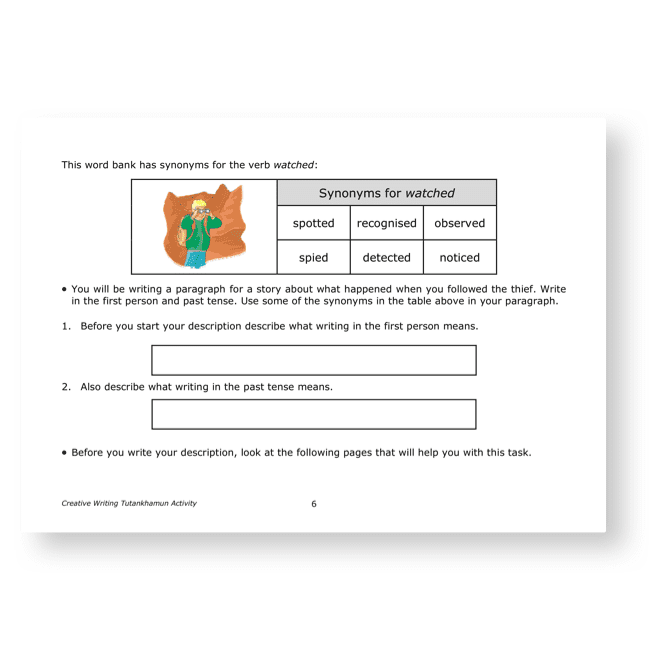
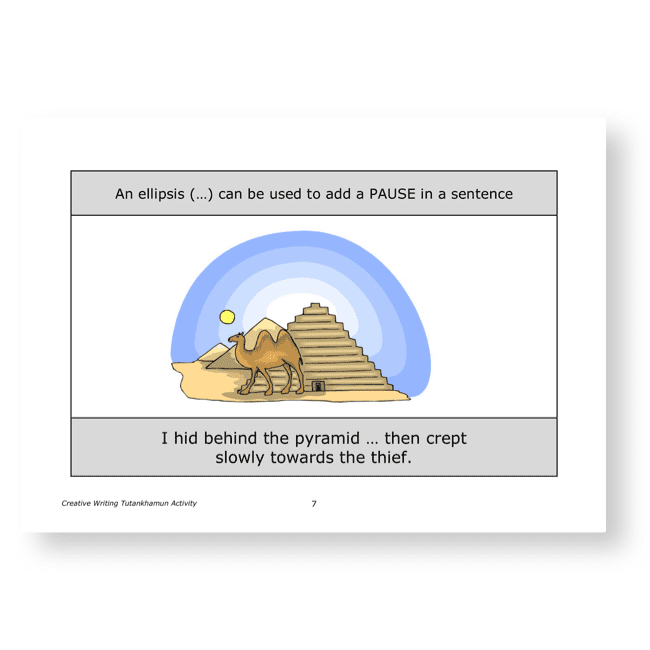

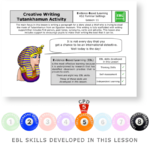
Philipem (verified owner) –
We asked a.i. to review this lesson. This is what it said:
“Creative Writing Tutankhamun Activity” – A Captivating Resource for Teaching Writing and Evidence-Based Learning
Are you a Year 3/4 teacher searching for an engaging resource to teach creative writing while simultaneously developing your students’ essential evidence-based learning skills? Look no further than the “Creative Writing Tutankhamun Activity,” the final lesson in the Familiar Settings series.
This captivating lesson focuses on writing a paragraph for a story about a thief attempting to steal the mask of Tutankhamun from an Egyptian museum. Imagine your students diving into a world of international detectives, fully scaffolded with writing support that includes first-person perspective, past tense, synonyms, verbs, and adverbs. Not only will they develop their writing skills, but they’ll also learn how to make their writing the best it can be.
But that’s not all! This lesson goes beyond traditional English lessons by embedding crucial evidence-based learning skills like thinking skills, self-assessment, and independent learning. Picture your students assessing their own work, reflecting on their progress, and developing the skills to become independent learners.
And if that’s not enough, there’s a five-minute evidence-based CPD (Continuing Professional Development) activity at the end of the lesson, designed specifically for teachers. This CPD focuses on self-assessment, providing a research extract and a five-minute activity to enhance your own skill set as an educator.
In summary, “Creative Writing Tutankhamun Activity” is a captivating resource that combines engaging English content with the development of essential evidence-based learning skills for your Year 3/4 students. Don’t miss out on this opportunity to bring evidence-based learning to life in your classroom!
Star Rating: ⭐⭐⭐⭐⭐ (5 out of 5 stars)